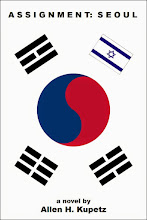Lee Kyung-sook, chairwoman of the presidential transition team said Wednesday that her advisors have been reviewing possible English training programs for teachers and other options to make this happen.
A Samsung Economic Research Institute (SERI) report found Koreans spent approximately 14 trillion won annually on private English tutoring, almost half of the entire household spending on private education, which has grown rapidly over the past decade.
A National Statistical Office (NSO) report showed that annual household spending on private education during the incumbent Roh Moo-hyun administration totaled 21 trillion won. Experts said that the actual figure is much larger than that.
Chairwoman Lee stated the new government views this problem as serious.
She said the surging household spending on English education is "not an educational problem but a social one."
Korea is struggling to cope with an English divide between children from wealthy parents and those from lower-income families.
In the presidential campaign, President-elect Lee pointed out that the vicious circle of poverty could come a result of the English divide.
He pledged to strengthen English education in public schools so that high school graduates will be able to speak English fluently.
The team said it had reviewed training programs for 3,000 Korean teachers and the setting up of a qualification system for native-English speakers and after school programs at elementary schools.
David Francis, a former team leader of an English immersion program at Young Hoon Elementary School in Seoul, told The Korea Times that the transition team needs to work on the details of these programs.
Francis said effective English-content courses need to include two core conditions ― qualified native-speaking educators and small class sizes.
"Daily language instruction should begin at grade one elementary, no later. During language instruction time the traditional classroom of forty students needs to be split up into at least two or if possible three smaller groups," he said.
Francis has taught literature, the humanities, and language in five countries including Singapore and Indonesia over the last fourteen years before joining Young Hoon Elementary School.
Andy Jackson, who teaches American Government at the Lakeland College bridge program at Ansan College, said English-language content courses would have to be taught as part of a program, rather than on an ad hoc basis, to be effective.
"The program would have to include a year of English immersion (with a test-out option) before content courses begin," he said.
The question is if strengthening the training program for English teachers in public schools will help achieve the policy goal.
A KBS survey in 2005 showed that 272 middle and high school teachers' average score on the Test of English for International Communication (TOEIC) was 718 out of 990.
According to KBS, these teachers had completed a 6-month long English language program before the survey.
The average TOEIC score of the teachers was slightly higher than the English requirement for college graduate job applicants at companies, which is 700.
This result indicates the training program for English teachers may be of little help in achieving the transition team's goal.
http://www.koreatimes.co.kr/www/news/nation/2008/01/113_17811.html ◦



